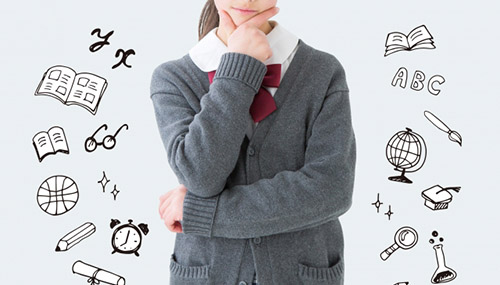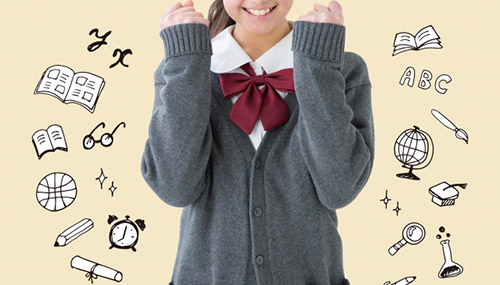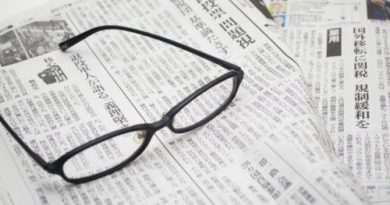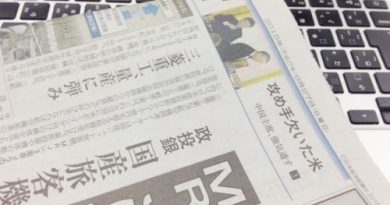Learn to read Japanese newspaper on Education
Continuing with the topic: Learn to read Japanese newspaper, in the following post, Learn Japanese Daily would like to introduce you to the next lesson: Learn to read Japanese newspaper on Education. Let’s start!
Contents
Instruction
In order to read Japanese articles on topic: Education, you can go to Japanese online newspapers such as: Kyouiku Shinbun, Mainichi Shinbun, Sankei Shinbun… and select category: 教育 (Kyouiku – Education).
Especially, for those who want to practice reading intensive education news, you can choose Kyouiku Shinbun as a place to search for a source forreading practice. The education news on this website is always updated quickly and fully every day, which help you easily follow and choose.
How to practice reading: just like the previous posts, you should skim the article to get the main idea first, then note down the unknown words and unknown sentences and look up the dictionary to clarify the meaning of each sentence. With the grammar structures that you have not learned yet, skip it to avoid disturbing knowledge.
Vocabulary on education in Japanese newspapers
文科省 (Monkashou) : Ministry of Education, Culture, Sports, Science and Technology (MEXT)
生徒 (Seito) : pupil, student
担任 (Tannin) : Homeroom Teacher
保護者 (Hogosha) : guardian, parent
学生ボランティア (Gakusei borantia) : student volunteer
不登校の児童生徒 (Futokou no jidou seito) : student truancy
児童教育 (Jidou kyouiku) : education for children
教材 (Kyouzai) : teaching materials
教育プログラム (Kyouiku puroguramu) : educational program
学期当初 (Gakki tousho) : beginning of semester
授業実践 (Jugyou jissen) : classroom practice
遠隔授業 (Enkaku jugyou) : remote lecture
入試 (Nyuushi) : entrance examination
読書活動 (Dokusho katsudou) : reading activities
学力向上 (Gakuryoku koujou) : academic development
人材育成 (Jinzai ikusei) : human resources development
教育の質を高める (Kyouiku no shitsu wo takameru) : improve the quality of education
育成する (Ikuseisuru) : train, nurture
理解を深める (Rikai wo fukameru) : develop an understanding
専門的なスキルを持つ (Senmontekina sukiru wo motsu) : have professional skills
Some Grammar structures found in category: education in Japanese newspapers

Sentence 1
Vたり、Vたりする : do things like…
生徒たちはグループごとに課題の洗い出しを行ったり、意見を出し合ったりしていた。
Seitotachi wa guruupugoto ni kadai no araidashi wo okonattari, iken wo dashiattari shite ita.
Students did research and share their opinions in each group.
Sentence 2
N + における : in, on, at, in area, related to area…
24年度からの大学入学共通テストにおける「情報Ⅰ」の出題について、CBTの活用を含め検討を進める。
24 nendo kara no daigaku nyuugaku kyoutsuu tesuto ni okeru “jouhouⅠ” no shutsudai ni tsuite, CBT no katsuyou wo fukume kentou wo susumeru.
Continue to study the issue of “Information I” at the 2012 college entrance examination, including the use of CBT.
Note: CBT stands for Computer Based Test.
Sentence 3
Vる + ようになる : to become, to turn into…
特別支援学校教諭免許で5領域全てをカバーできるようになるなど、両大学の資源を生かした相乗効果が期待される。
Tokubetsu shien gakkou kyouyu menkyo de 5 ryouiki subete wo kabaa dekiru you ni naru nado, ryoudaigaku no shigen wo ikashita soujou kouka ga kitaisareru.
The results of cooperation in the exploitation of resources between the two universities are expected, for example, with a special support school teacher’s license they can participate support in all five areas.
Note: 5 areas of education including: physical, context, relationships, language, expression.
Sentence 4
N + に関する : relate to N, as for N…
文科省は28日、事件に関する情報収集に当たり、29日の緊急閣僚会議を受けて対応を検討する方針。
Bunkashou wa 28 nichi, jiken ni kansuru jouhou shuushuu ni atari, 29 nichi no kinkyuu kakuryou kaigi wo ukete taiou wo kentou suru houshin.
While collecting information relating to the incident on the 28th, the Ministry of Education, Culture, Sports, Science and Technology also plans to attend the emergency minister meeting on the 29th to discuss how to respond.
Sentence 5
Vる, Vない, Vた, Aい, Aな, Nの + 場合は : in the case of…
面談で行う場合は、進路指導の中で学修意欲を確認することも可能とした。
Mendan de okonau baai wa, shinro shidou no naka de gakushuu iyoku wo kakuninsuru koto mo kanou to shita.
In the case of organizing meetings and discussions, (teachers) can confirm the aspirations study (of students) with career counseling.
Practice reading Japanese newspaper on education
Let’s practice reading news on education on Kyouiku Shinbun!

Title
大学への修学支援で手引き公開 高校生の学修意欲を確認
Daigaku e no shuugaku shien de tebiki koukai koukousei no gakushuu iyoku wo kakunin
Announcement of support regulations for university study – Confirmation of high school students’ aspirations study
Content
2020年4月から始まる大学などへの修学支援新制度に向けて、文科省は5月22日、高校が、大学などの授業料減免や給付型奨学金の利用を希望する生徒の学修意欲を確認するための手引きを、ホームページで公開した。
2020 nen 4 gatsu kara hajimaru daigaku nado e no shuugaku shien shin seido ni mukete, bunkashou wa 5 gatsu 22 nichi, koukou ga, daigaku nado no jugyouryou genmen ya kyuufugata shougakkin no riyou wo kibou suru seito no gakushuu iyoku wo kakunin suru tame no tebiki wo, hoomupeeji de koukai shita.
For the new learning regime support of universities that will start from April 2020, the Ministry of Education, Culture, Sports, Science and Technology announced the regulations on the homepage on the May 22 to confirm the aspirations study of students who wish to receive tuition waivers and grant-type scholarships.
授業料減免や給付型奨学金を受けるためには、高校3年生時点で、進学後の学修意欲を高校側が確認することが要件のひとつになっている。
Jugyouryou genmen ya kyuufugata shougakkin wo ukeru tame ni wa, koukou 3 nensei jiten de, shingakugo no gakushuu iyoku o koukougawa ga kakunin suru koto ga youken no hitotsu ni natte iru.
In order to be exempt from tuition fees and receive grant-type scholarships, the recertification of the aspirations study after applying to higher education from the high school with high school seniors is an essential condition.
手引きによると、評定平均が3.5以上の場合は、高校での日常的な学習状況や進路指導を勘案して、進学前の明確な進路意識や強い学びの意欲があるかを判断する。
Tebiki ni yoru to, hyoutei heikin ga 3. 5 ijou no baai wa, koukou de no nichijoutekina gakushuu joukyou ya shinro shidou wo kanan shite, shingaku mae no meikaku na shinro ishiki ya tsuyoi manabi no iyoku ga aru ka wo handan suru.
According to the guide, in case of GPA (Grade Point Average) of more than 3.5, it will be considered on daily study at the school and career path to judge whether the students have a clear sense of the future path before entering university or desire to study strongly or not.
評定平均が3.5未満の場合は、リポートまたは面談で大学での学修意欲の有無を判断する。
Hyoutei heikin ga 3. 5 miman no baai wa, ripooto matawa mendan de daigaku de no gakushuu iyoku no umu wo handan suru.
If the GPA is less than 3.5, it will be considered judging on the essay or interview to see whether the students want to enter university or not.
Above is the content of the article : Learn to read Japanese newspaper on Education. See you next time!



